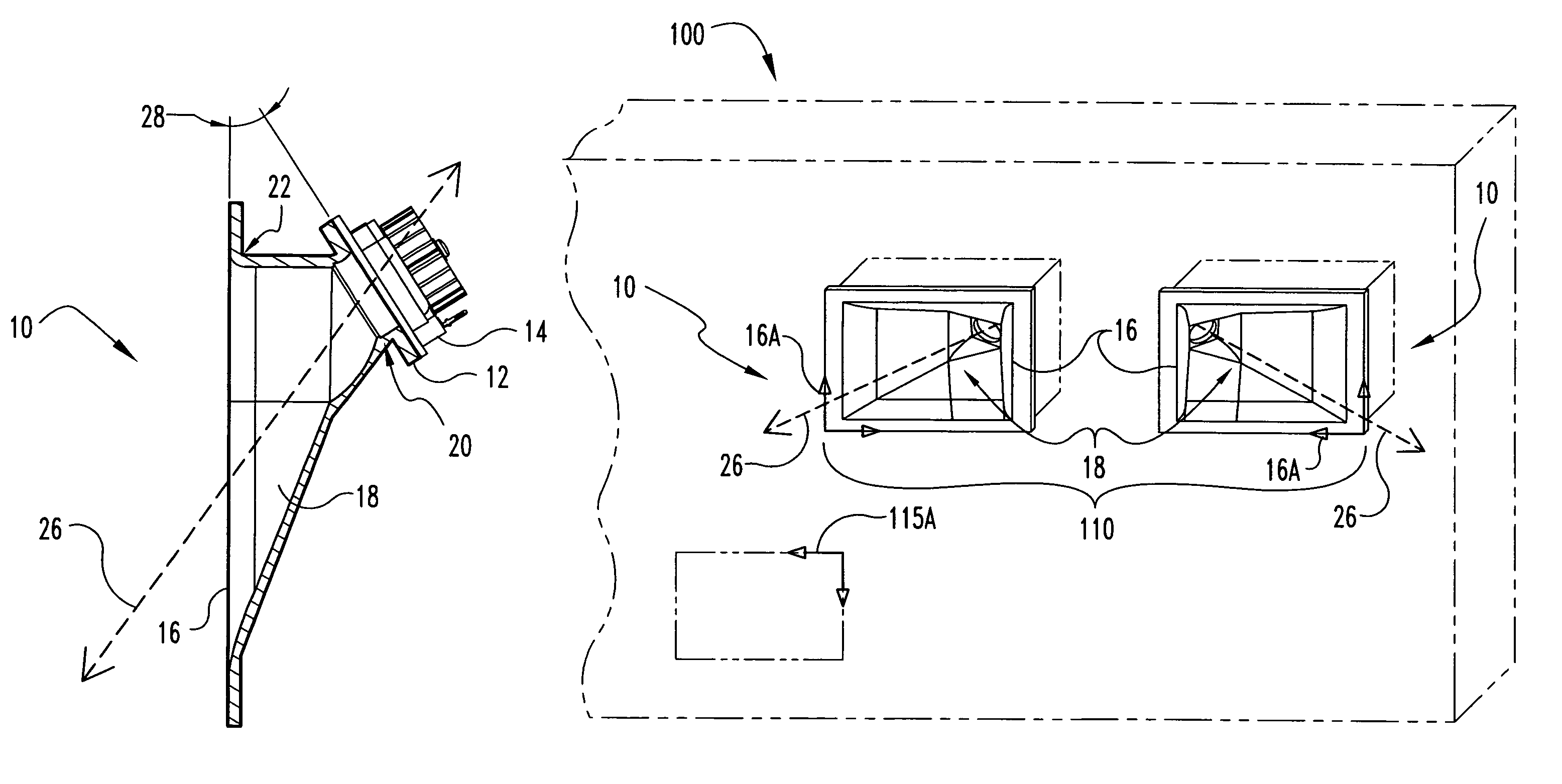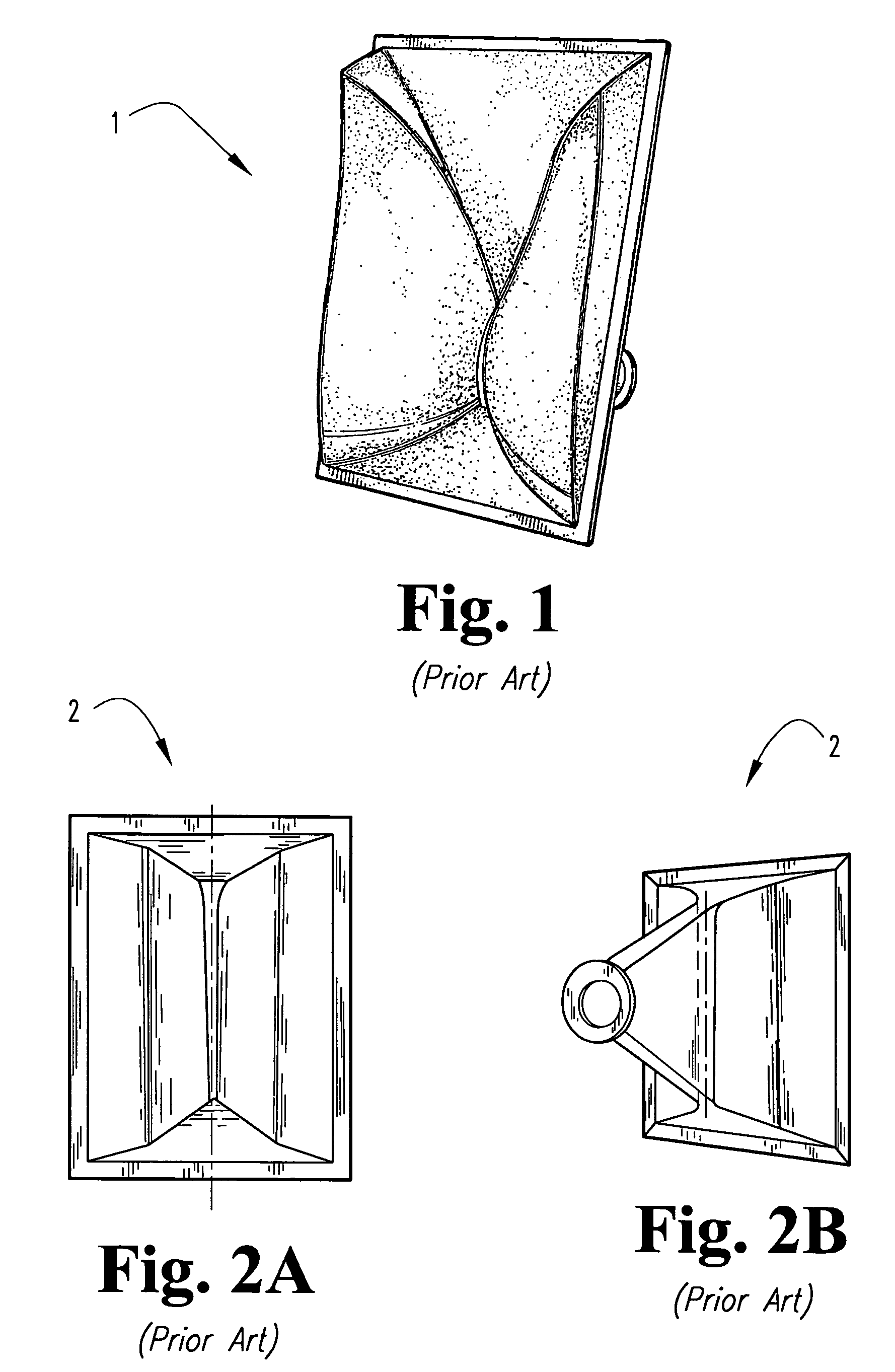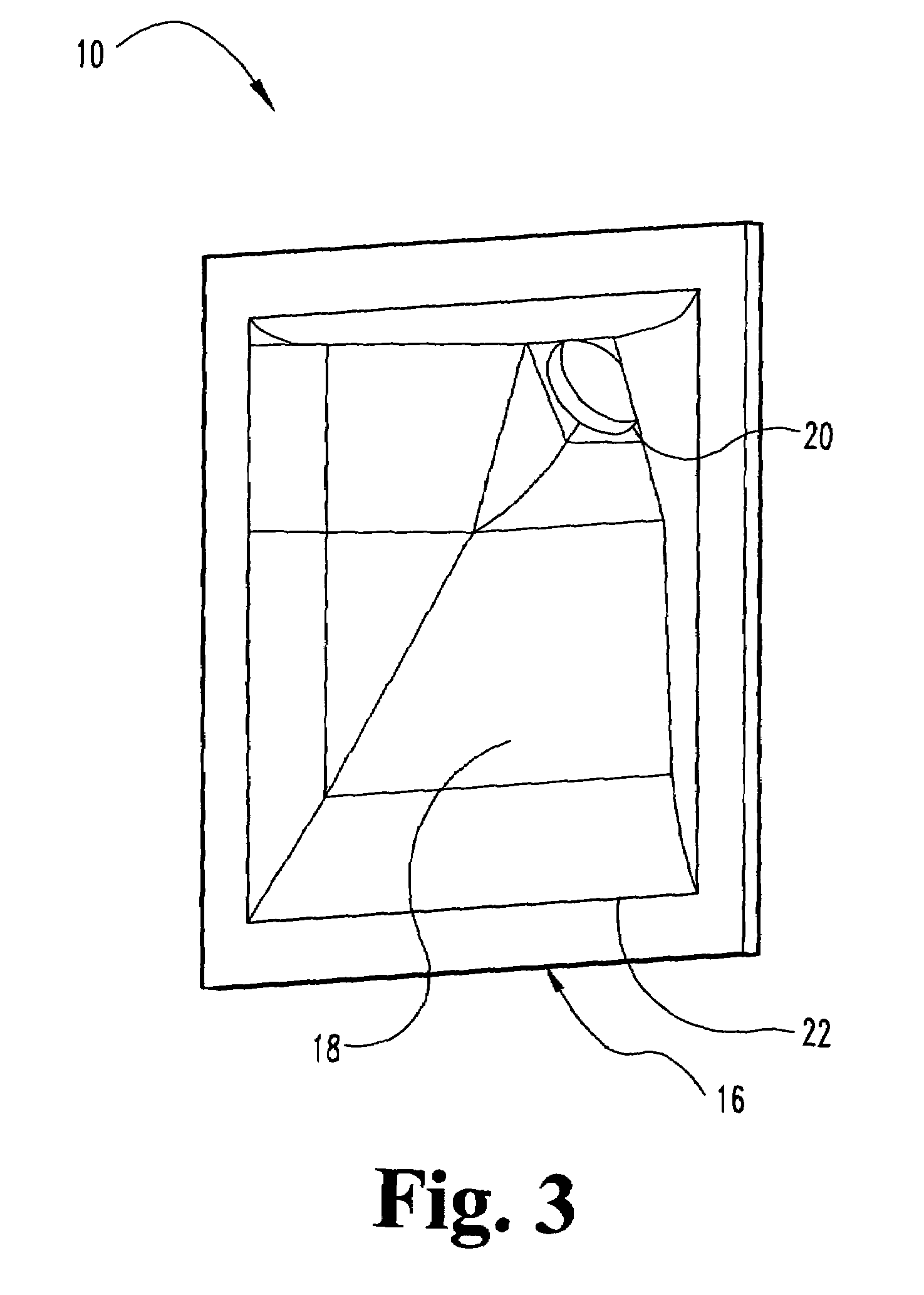Skew horn for a loudspeaker
a loudspeaker and horn technology, applied in the field of waveguides, can solve the problems of degrading the sound quality heard by a listener, affecting and affecting the sound quality of the horn, so as to improve the design of the horn
- Summary
- Abstract
- Description
- Claims
- Application Information
AI Technical Summary
Benefits of technology
Problems solved by technology
Method used
Image
Examples
first embodiment
[0035]the present invention is illustrated in FIGS. 3-5 and relates to a flat-front wide dispersion horn or waveguide 10 that may be used alone or as part of an array. Each individual horn 10 may be characterized by at least about 45 degrees and more typically 60 degrees or more of dispersion. Each horn 10 includes a transducer or acoustic source coupling flange 12 for connection to an acoustic source 14, a substantially flat or planar mouth 16 and a flared duct 18 extending therebetween. The coupling flange 12 enables mechanical and acoustic coupling of a transducer 14 thereto via a “bolt on”, “screw on” or like mounting configuration. The application of signal to the transducer 14 results in the transduction of a (typically electrical) signal into modulated air pressure or sound waves. In the case of compression drivers 14, this occurs through oscillation of the voice coil in a magnetic gap. Once produced, the longitudinal sound waves travel down the duct 18, following the steadil...
second embodiment
[0039]FIG. 6 illustrates the present invention, a speaker system 100 including a horn assembly 110 having a plurality of horns 10 recessed in a wall. The mouth planes 16A of the horns 10 are coplanar or substantially coplanar with the wall plane 115 defined by the flat surface of the wall. Each horn 10 in the assembly 110 typically defines a mouth 16, an elongated duct 18 and a driver or transducer 14 as described above regarding FIGS. 3-5. The duct 18 is essentially a hollow truncated cone or tube positioned between and acoustically connecting the substantially planar mouth 16 and the driver 14 via the substantially flat coupling flange 12. As above, the driver 14 may typically be thought of as defining a substantially flat output plane 12A coplanar and indistinguishable from the coupling flange plane 12A and nonparallel with the mouth plane 16A. The duct 18 is further characterized by a central or major axis 26 extending therethrough, which is typically normal to the output plane ...
PUM
 Login to View More
Login to View More Abstract
Description
Claims
Application Information
 Login to View More
Login to View More - R&D
- Intellectual Property
- Life Sciences
- Materials
- Tech Scout
- Unparalleled Data Quality
- Higher Quality Content
- 60% Fewer Hallucinations
Browse by: Latest US Patents, China's latest patents, Technical Efficacy Thesaurus, Application Domain, Technology Topic, Popular Technical Reports.
© 2025 PatSnap. All rights reserved.Legal|Privacy policy|Modern Slavery Act Transparency Statement|Sitemap|About US| Contact US: help@patsnap.com



